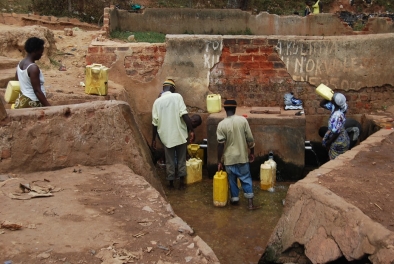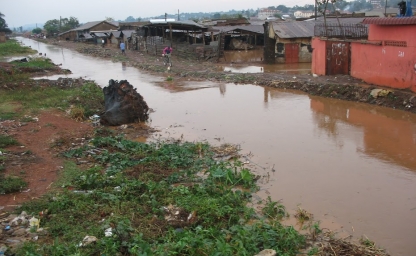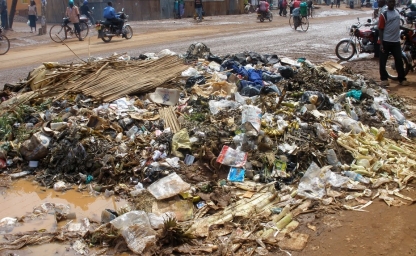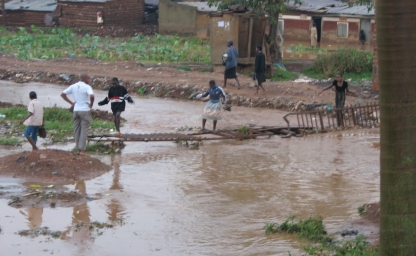Home
Integrated approaches and strategies to address the Sanitation Crisis in Unsewered Slum Areas in African mega-cities.
Introduction
Africa, though reported to be the least urbanized continent, is recognized as one where the rate of urbanization is highest. To house all these new city dwellers, informal settlements in the peri-urban areas continue to development and expand.
It is not only housing that the urban population requires: clean drinking water and hygienic sanitary conditions are also essential. Providing water and sanitation in these peri-urban areas is however very difficult, for technical, financial, institutional and spatial reasons.
Lack of proper sanitation not only leads to undignified and unhealthy conditions; stagnant water causes breeding pools for malaria, plus the streams entering and leaving the slum catchment, either as surface water or groundwater, form a significant pollutant load.
This water is polluting drinking water and, due to extremely high phosphorus fluxes from the slum catchments, eutrophying surface water.
SCUSA research project
At the beginning of 2009, the 'IHE Delft Partnership for Research'-funded SCUSA research project started for a period of 4 years. Main aim of the project was to identify low cost integrated sustainable sanitation solutions to reduce the stream of nutrients, leaving the slum and causing eutrophication downstream in the catchment. Partners in the project were Makerere University and the Kampala City Council. Most of the research work was carried out by PhD and MSc students, who focused on the hydrological, sanitary engineering, and socio-economic aspects of sanitation in slums. The project had a demonstration site in the Bwaise III slum in Kampala, Uganda.
The Bwaise III slum
Bwaise III is located in the northern part of Kampala city approximately 4 km from the city centre. It is a low-lying area (mostly a reclaimed wetland) with a very high groundwater table. Bwaise III is largely unplanned, with lack of basic services, poor road access and deplorable housing. It has one of the highest population growth rates in Kampala with an annual average rate of 9.6% (more than twice the city’s average growth rate of 3.7%) and a high population density of more than 25,000 persons per km2. Grey water, storm water, excreta and solid waste management practices are grossly inadequate, resulting in poor environmental sanitation.
Objectives
- To identify and implement low cost integrated sustainable sanitation solutions to provide excreta and greywater management in a typical slum area.
- To determine the financial, institutional, and sociological mechanisms or boundary conditions for successful implementation of sustainable sanitation solutions in this urban slum and to use the lessons learned in other slum areas.
- To determine the effect of slums and of environmentally sustainable sanitation in slums on groundwater and surface water quantity and quality.
- In answering to these research objectives, IHE Delft is joining forces with Makarere University from Kampala Uganda.



